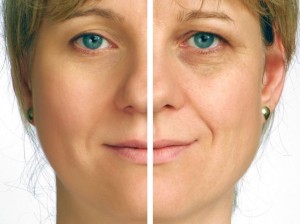Riverchase Dermatology and Cosmetic Surgery –


Patients are often amazed at just how effective laser treatments are at removing unwanted dark spots and tattoos.
What Causes Dark Spots?
Pigmented lesions (lentigos, sun spots, freckles) are pockets of excess melanin in the skin. Everyone has melanin in their skin; it’s what gives our skin its color. High concentrations of melanin in certain areas can be due to various factors. Some types are present at birth, but most occur with age or sun exposure. At Riverchase Dermatology, we have different laser options available, allowing us to tailor each treatment for a patient’s individual needs.
Are Laser Treatments Safe?
Laser treatments are not only effective, they are also a safe alternative to repairing damaged skin because of the laser’s ability to selectively treat only the pigmented lesions without adversely affecting the surrounding skin.
Laser treatment is most often used to treat areas of the face, chest, shoulders and arms because these areas have typically had the most sun exposure. For best results, our office has different lasers available for treating various parts of the body, depending on the size of the area that is being treated. Our Sciton Broad-Band Light procedure can be applied to any body area and is best for treating medium to large surface areas. Our Med-Lite Nd:Yag Laser is the most effective for individual, discrete lesions.
Immediately following the treatment, the spots darken in color. This darkening generally lasts one week on the face and three weeks on the body. Then, the pigmented lesions resolve without scarring. Typically one laser treatment results in near complete resolution. A second or third session is sometimes required for certain skin types, body areas, or densely covered areas.
What about Tattoo Removal? Do Lasers Really Work?
If you are living with “Tattoo Regret” you’re not alone. According to the American Society of Dermatological Surgery, over 50% of everyone who has a tattoo wants it removed. The truth is most people regret getting “that tattoo” and are forced to live with this seemingly permanent reminder forever. What most people don’t understand is there are treatments and breakthrough technologies that can, in many cases, completely remove your tattoo as if it never happened!
Unfortunately some people who are desperate to remove unwanted tattoos still resort to such painful methods as excising (cutting the tattoo out of the skin), salabrasion (sandblasting the tattoo with salt), and acid washing (burning the tattoo with acid).
What people need to realize is that those unwanted tattoos can now be safely removed with the most advanced type of laser. Known as an “Electro Optic Q-Switched Laser,” with flat beam profiles, it is much larger than table-top models, and has the ability to generate much more energy.
This allows the light beam to not only be highly concentrated and much cooler, but it lets the technician adjust the power and depth of the beam according to variables like skin type, ink make up and ink depth. This gives us the ability to direct a pulse of light_rather than a continuous beam or “Quasi Pulse” as in the table top lasers_below the top layers of skin, without causing damage to them, and target it right to the layer where the ink lies. The light breaks the ink molecules down, just as the older lasers did, allowing your body’s system to eliminate them naturally.
While it may have taken just a single session to put your tattoo on, it typically takes an average of 7-10 sessions to remove it. And this is the most important bit of information I can give you: Although you may want your tattoo gone right now, the removal process does take time_in some cases several months, and even up to a year.
There are several factors that determine whether you will achieve what we call “complete clearance,” or the total removal of your tattoo, as if you had never gotten it in the first place. Those factors include: how your body heals, the quality of your tattoo (i.e. was it homemade or professionally administered), how deep the ink is set in your skin, and the quality of ink.
Your tattoo will fade noticeably after the very first session. During the removal process, when the laser blasts the ink in your skin and breaks it down, your body’s natural cleansing process continually works to clear it away, long after the session is over. So even if you decide to only have a single removal session, your tattoo will continue to fade over time. It will just take considerably longer than with repeated sessions, and will simply fade, rather than be removed completely.
Since the laser does not “dig” or “burn” its way through your skin, the results are usually much more favorable, with a less than 1% chance of scarring.
Are you looking for a safe and effective way to erase sun damage, remove a tattoo, reduce pore size or wipe away other skin imperfections? Laser treatments that target specific points on the skin may be the best option for you to manage the damage that your skin has endured over the years. Consult with your medical professional at Riverchase Dermatology for complete information on the benefits and risks of treating your damage.
Riverchase Dermatology
1-800-591-DERM(3376)
www.RiverchaseDermatology.com
 Southwest Florida's Health and Wellness Magazine Health and Wellness Articles
Southwest Florida's Health and Wellness Magazine Health and Wellness Articles
